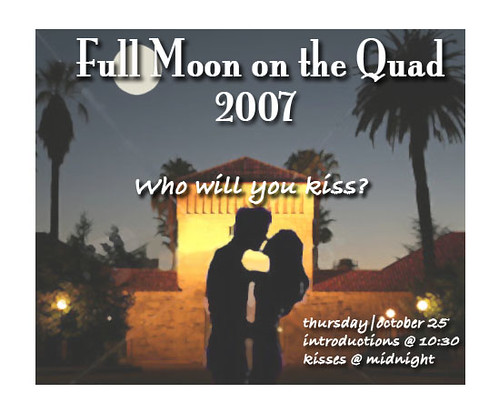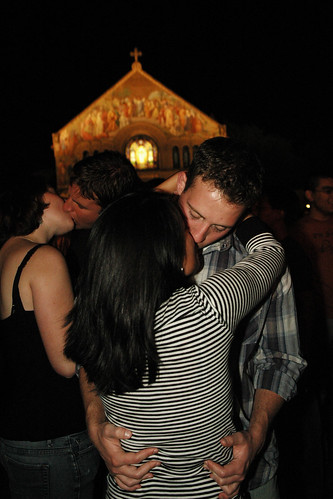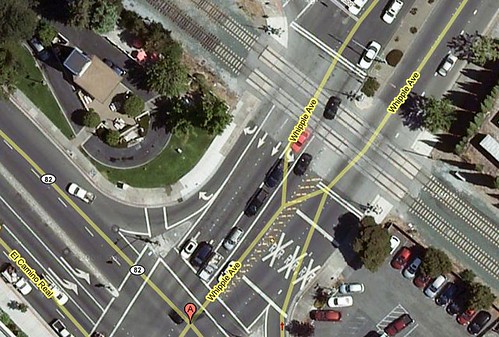 Last week Sunnyvale Chevrolet on El Camino Real abruptly went out of business. This has obviously been a tough time for auto dealers, especially those who were dropped by struggling U.S. automakers. Along its length El Camino has a large number of new-car showrooms; the Sunnyvale Auto Row alone has ten…er, nine now. They’re not all going to disappear but the decline in the economy in general and in new car sales in particular is forcing cities and dealerships to rethink their future.
Last week Sunnyvale Chevrolet on El Camino Real abruptly went out of business. This has obviously been a tough time for auto dealers, especially those who were dropped by struggling U.S. automakers. Along its length El Camino has a large number of new-car showrooms; the Sunnyvale Auto Row alone has ten…er, nine now. They’re not all going to disappear but the decline in the economy in general and in new car sales in particular is forcing cities and dealerships to rethink their future.
The automobile is largely responsible for making El Camino Real what it is today. After the California missions secularized and the United States won control of the state from Mexico, El Camino nearly faded into obscurity, various stretches of it being renamed, rerouted, or forgotten. It was the inspired vision of the California Federation of Women’s Clubs at the start of the 20th century that led to its recognition and preservation along with the missions as a treasured historical landmark. However automobile clubs like the California State Automobile Association spearheaded the practical effort to make it serviceable for cars. The CSAA produced markers and maps for El Camino, lobbied for pavement and passable grading, and for a while were even responsible for the maintenance and upkeep of the famous bell markers which the women’s clubs had placed along its length. Thanks to the combined efforts of the women and “automobilists” of the state, El Camino became the car-centric highway that linked the Bay Area to Southern California.
For 100 years the car has ruled the Royal Road. For the last fifty years in much of Santa Clara and San Mateo counties El Camino has taken the form of a homogeneous multi-lane commercial strip, with miles and miles of low-slung low-density commercial buildings fronted by car-friendly parking lots and frequent curb-cut driveways. It’s a form that’s frankly hostile to pedestrians and bicyclists. But now in the 21st century people are ready for change.
The commercial strip is becoming less and less viable as businesses and their customers find greater value and convenience in regional super-malls and revitalized or fabricated downtowns. But cities can’t afford to let El Camino decline into disuse so they’re proactively making plans to transform it into a Grand Boulevard. The vision is a corridor with a smoothly transitioning rhythm of zones varying from public open spaces to high-density urban mixed-use developments. The key is to impose unifying architectural guidelines that make the boulevard appealing and convenient for pedestrians first, not cars. Examples include creating lovely wide sidewalks separated from flowing auto traffic by landscaping and curbside parking, and getting rid of frontside parking lots and bringing the front doors of businesses and residences much closer to the pedestrians. Amazingly they want to slow the auto traffic down by taking away car lanes and giving new dedicated lanes to bikes and public transit.
These are ambitious plans that can’t happen overnight. An obvious obstacle is the current businesses that are doing relatively well and don’t wish to see their buildings bulldozed and their parking lots filled in. Here then is where the failed auto dealerships present an opportunity.
When the car had its heyday in the last century, it made perfect sense for car dealerships to locate on the El Camino commercial strip. That’s where the drivers were, and drivers were their customers. That’s how I first heard of El Camino Real. Having grown up in the East Bay in the 70s and 80s I remember the infectious bouncing-ball TV jingle for a long-gone dealership: “Pete Ellis Dodge, 1095 West El Camino Real, Sunnyvale.” El Camino and the dealerships were made for each other. Design-wise the dealerships were in fact the archetypical commercial strip businesses except ironically the front lots weren’t for parking but for inventory.
But we’re at a point in history now where as a nation we’re trying to reduce our reliance on the private automobile. We still love our cars but we’re realizing our economy and ecology can’t continue to support the fuel that goes into them and the emissions that come out. Our psyches are bruised from all the time we spend in them in long, inefficient, bumper-to-bumper commutes and our bottoms are spreading from the exercise they deprive us of and the drive-through high-caloric nightmares they enable. Our car culture is looking unsustainable and is receding for a myriad of complex reasons, and a direct result is dealerships shutting down.
(A noteworthy exception to this trend is Tesla Motors, the start-up manufacturer of fully-electricnot hybridplug-in cars. For reasons I haven’t seen publicly stated they seem doggedly devoted to the cities along El Camino Real. Their corporate offices are in San Carlos, they have a showroom on El Camino in Menlo Park, and they’re opening an R&D and manufacturing facility in Palo Alto. It could be they’re planting their roots in the state’s ancient road for continuity as they take us into the future. I applaud their innovations, but one must consider the economic case against battery-powered electric vehicles.)
No one wants the traditional dealerships to fail. No one wants their employees to lose their jobs, local governments hate to lose the sales tax they generate, and neighbors abhor the vacant lots they leave behind. So the closures are an unpleasant reality but once accepted they can be the bellwethers of change and cures for so many car-related ills. The vacant lots can be purchased and redeveloped according to the Grand Boulevard plan, perhaps as mixed-use residential and retail that will get people out of their cars and out walking, biking, or busing from their homes to convenient neighborhood stores, restaurants, and jobs, all on the boulevard.
This exact debate is happening in Menlo Park. A Cadillac dealership on El Camino near Valparaiso closed down and the city council, developers, and the community are working out what to replace it with. The leading plan includes retail and office space. It lacks residential space for various logistical reasons but all parties wish it could be included. Simultaneously they’re moving ahead with a plan to revitalize the city’s downtown and its El Camino segment.
I don’t know what will become of the recently-closed Sunnyvale Chevrolet dealership. Last December the city actually recommended moving the entire Sunnyvale El Camino Auto Row to Onizuka Air Force Station which is scheduled to close in 2011. The city hadn’t decided what to do with the space on El Camino, and Radio Sunnyvale reports that the whole idea is on hold for now, but it shows that cities are ready to make big changes and they’re eyeing the valuable real estate that the transitioning auto industry is freeing up as the engines of that change. There’s no future in the single-use resource-guzzling status quo; the engines of change, it’s clear, will be hybrid.


 El Camino Real High (“ECR”) is a powerhouse but this is the first championship for these particular students and coaches. There’s something endemic in their program which produces winners. They prepare all year, studying 7 days a week for up to 6 hours a day. The school does well in other academic and cultural competitions too, but they’re not just about the brainiacs. Their notable alumni include America Ferrera and Christopher Knight. Yeah, Peter Brady.
El Camino Real High (“ECR”) is a powerhouse but this is the first championship for these particular students and coaches. There’s something endemic in their program which produces winners. They prepare all year, studying 7 days a week for up to 6 hours a day. The school does well in other academic and cultural competitions too, but they’re not just about the brainiacs. Their notable alumni include America Ferrera and Christopher Knight. Yeah, Peter Brady.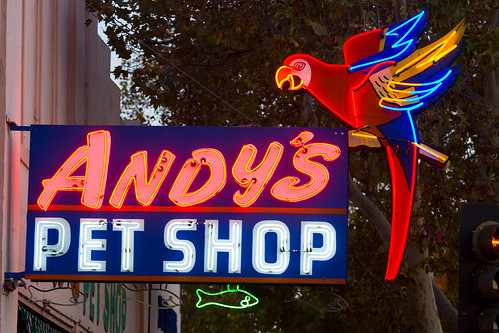

 A Santa Clara University legal center has been
A Santa Clara University legal center has been 

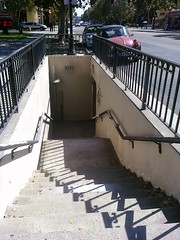 I’m certainly not happy to see the tunnel go. I love the idea of the little critters scampering safely across the busy road through the thoughtfully-provided underpass. El Camino is a great way to go North and South, but it does have this tendency to split land in half, to separate East from West. It’s pretty easy to cross by car; I heard once that the intersection of El Camino Real and San Tomas Expressway in Santa Clara is one of the busiest intersections in the Bay Area. But for everyone else, crossing El Camino can be an ordeal. In 1928 the city of San Jose built a pedestrian subway tunnel under The Alameda for the students of Hester School to use. The subway is dedicated to the memory of Virginia A. Frazer and Charles Loring Sykes, two students who were struck and killed by automobiles while crossing the road. It was commendable of the city to take action to prevent another tragedy. San Diego should take note.
I’m certainly not happy to see the tunnel go. I love the idea of the little critters scampering safely across the busy road through the thoughtfully-provided underpass. El Camino is a great way to go North and South, but it does have this tendency to split land in half, to separate East from West. It’s pretty easy to cross by car; I heard once that the intersection of El Camino Real and San Tomas Expressway in Santa Clara is one of the busiest intersections in the Bay Area. But for everyone else, crossing El Camino can be an ordeal. In 1928 the city of San Jose built a pedestrian subway tunnel under The Alameda for the students of Hester School to use. The subway is dedicated to the memory of Virginia A. Frazer and Charles Loring Sykes, two students who were struck and killed by automobiles while crossing the road. It was commendable of the city to take action to prevent another tragedy. San Diego should take note.


